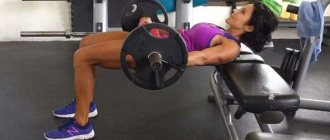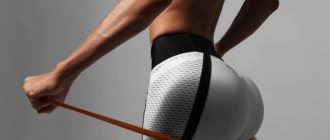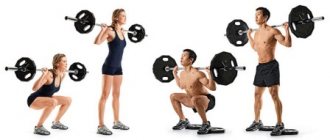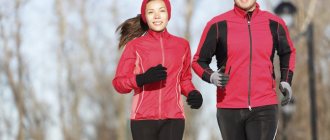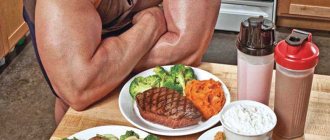How to pump up your legs at home
03/15/2017 bodybuilding 101,398 Views
Today, a huge number of people try to stand out with the help of a beautiful body. After all, films, magazines and social networks are filled with pictures depicting pumped-up guys. As for the real world, many only dream of an ideal figure, making excuses that there is no time for the gym. Others go to the gym and train only the upper part, believing that training the buttocks and legs is for girls, thus creating imbalances. Men need lower limb training so that strong legs can support the whole body, and if the work is office work, then prevent joint diseases.
It is quite possible to pump up your legs at home. To do this, it is enough to be patient, stick to the program, diet and follow the technique when doing the exercises. Only those who are familiar with the structure of the body can pump their legs correctly, otherwise how can you train if you don’t know which muscles work?
Interesting Facts
As anthropologists have found out, when meeting and assessing a person, the first thing they look at is their buttocks. And this happens to both sexes. This means you need to train your butt with even more enthusiasm.
You can pump up the “center of the Universe” (the expression of Katya Usmanova, a famous fitness model, characterizing the buttocks) with a large number of exercises. Firstly, this is the well-known Romanian deadlift with dumbbells. Next in the chain of basic exercises, the next one will be the bench press and hyperextension. To perform the second exercise, move the pillow down. This way the load will go to the buttocks. For the best effect, take the pancake in your hands.
Anatomy of leg muscles
Legs are a voluminous group of muscles, which during training will help burn more fat and make the body sculpted. Pumping your legs will give an impetus to the growth of muscle mass and increase in volume.

There are 4 muscle groups in the legs:
- Buttock muscles.
- Anterior, located on the entire front surface of the thigh.
- Rear, located under the buttocks and above the knee.
- Shins.
Leg muscles are elongated muscles that, when contracted or relaxed, allow the body to move. Small ones, I help the big ones hold on, work their joints, maintain posture.
Let's look at each separately. 1. The butt consists of three parts: the gluteus maximus, the gluteus medius and the gluteus minimus. The first is responsible for the appearance of the buttocks and is one of the most massive muscles in the body. The other two are hidden under the large muscle. If they are pumped together, the “fifth point” looks toned and elastic. The buttocks are responsible for rotating the joints in the pelvis, moving the legs back and to the side.
2. The quadriceps muscle of the thigh, located in the front of the leg, is also called the quadriceps. This is the strongest of the leg muscles and occupies the entire front part. The quadriceps is a set of the following muscles:
- lateral – a large muscle on the outer side of the leg with a flat shape;
- the medial (teardrop-shaped) muscle, which runs along the inner line of the thigh to the patellar ligament;
- the intermediate muscle of the thigh, located between the first two;
- rectus muscle, the longest of all. This muscle has almost no effect on the knee joint.
The quadriceps femoris is one of the main, but not the only muscles in the front of the thigh. Its mission is to bend the knees, bend the body forward and extend the hips.
3. At the back of the legs there are three muscles responsible for the functioning of the hip and knee joints. These include:
- biceps femoris - a biceps muscle responsible for flexing the lower leg at the knee joint and abducting the hip back;
- semimembranosus – flexes the lower leg and extends the thigh;
- the semitendinosus is involved in the same processes as the previous ones.
4. The musculature of the lower leg consists of: gastrocnemius, soleus, plantar and anterior tibial. The main functions of the muscles are movement of the foot, ankle joint, and inward rotation of the knees.
Only knowing the anatomy of the body can you quickly pump up your legs. Of course, for this you need to choose the right set of exercises.
Step aerobics
A special set of exercises, using a step platform, is designed for those who want to pump up their buttocks in 2 weeks. The program involves performing continuous exercises at a fast pace. Step aerobics simulates going up and down stairs. At the same time, a lot of calories are burned and the muscles of the legs and buttocks acquire a toned shape.
The convenience of this type of aerobics is that it can be done both in the gym and at home.
Most step aerobics trainers recommend doing it at least twice a week. It is better to choose the time of exercise 2-2.5 hours after eating, and also refuse to eat 1.5 hours after training.
Basic exercises for effective pumping
How to pump up a man’s legs at home and not spend money on the gym? When starting to exercise, remember that all muscles originate from bones and tendons and one of the main tasks is to gradually load the muscles and joints, they must get used to the exercises and load.
It is important when performing exercises not to injure the following joints:
- hip, when moving the hips relative to the position of the pelvis;
- knee, its position relative to the lower leg;
- ankle, when moving the foot relative to the position of the lower leg.
The best leg exercises at home are squats and lunges. They are the basis of any leg workout.
Squat

The squat is a basic and best exercise that you can do at home. Technique: place your feet slightly wider than your shoulders, toes to the sides, back straight. When squats, we press our heels into the floor and pull our pelvis back, making sure that our knees do not go beyond our toes, otherwise the quadriceps will take the entire load and the joints may be injured. We stand up as if someone is pulling the top of the head, but do not fully straighten our knees. You can perform 3 - 4 sets of 15 - 20 times.
On topic: Therapeutic exercises for the buttocks
To achieve the best effect and mass training, try to complicate the task for yourself over time and add weight. You can take dumbbells, a travel bag with weights and holding them in front of you or placing them at the top of your back on the trapezium, perform goblet squats. There is an important point here: if the weight is placed in front, the load will go to the front of the thigh and calves, if the buttocks and hamstrings work at the back. The rules of execution are the same, but this exercise will help you quickly see pumped up legs.
Lunges are an effective exercise to train at home. Classic lunges are performed like this: with a wide step forward (backward), we transfer the body weight to the heel of the leg that is in front, with a spring, forming right angles in the legs. Under no circumstances should the knee go beyond the toe or hit the floor. The ending can be performed in different ways: returning to the starting position or continuing the execution statically.

You can diversify the classic with the Bulgarian split squat. We place the sock on a chair or sofa and, as in the previous version, we step forward, lower ourselves and rise. The raised leg should not participate and help lift the body, it only serves as a small support and increases the angle of stretching of the buttocks. You can also perform a split squat in another way. Place your working leg on a chair and, rising to a height, raise the opposite leg, lowering down to stretch the muscles as much as possible, making a cross lunge. This strength training technique will help you pump your legs more productively.

The glute bridge is a good exercise for the buttocks and leg muscles. Starting position: lying on the floor, legs slightly apart, rise up, fixate for 1 second and lower down. If you place one leg on a hill and raise the other to an angle of 90 degrees and spring in this way, the gluteal muscles and hamstrings will be perfectly worked out. This exercise will replace the leg press and hip flexion for a man and will help him get pumped up thighs.

Deadlifts will also help tone up skinny legs. We hold dumbbells (or a barbell) in front of us with our arms down, our back arched in the lower back, our knees slightly bent. We bend forward to the middle of the shin, straining the buttocks. It is important to remember that you cannot straighten your legs all the way. If you continue to bend your knees while bending, the load will move to the lower back, and if you straighten it completely, then to the knee joint. We remember that our task is to pump up the thighs, and not to injure the joints.
A set of exercises for the lower leg muscles
- Walking on toes. Stand on your toes and walk around the house in this position for 5 - 7 minutes.
- Bend forward (as when stretching), rest your hands on the floor and walk on them without lifting your heels from the floor until your anatomy allows. Next, “walk” a little, stretching your calves.
- Stand on a step or book so that your heel does not rest on the floor, and rise on your toes. For effectiveness, pick up any weight.
- Any jumping gives an excellent load. If you have a jump rope in the house and include jumping in your training program, you can supplement your training with cardio exercise. For variety, you can jump out of a squat with dumbbells in your hands.

All these exercises for pumping your legs at home can be diluted by swinging your legs to the sides, from any position (standing or on all fours), walking up the steps in the entrance and other exercises.
Leg training program

Of course, ideally, it is better to set aside a separate day for leg training. Since this is a very complex and painstaking work. It will be hard to give it your all, knowing that there is another muscle to pump ahead. But if this is not possible, then pump a small muscle for the second time. Biceps, triceps or shoulders (deltoids) are perfect for this role.
- Lower body warm-up: 5-10 minutes
- Squats with a barbell on the shoulders: 1 warm-up set and 3 working sets for 10-12 reps
- Lying leg press in the machine (to begin with, it is recommended to place the legs neutrally in the middle of the platform, slightly wider than the shoulders): 1 warm-up and 3 working reps for 12-15 reps
- Romanian deadlift: 1-2 warm-up sets and 3 work sets of 10-12 reps
- Leg curls in the simulator: 3 working repetitions for 10-15 reps. Try to hit the hamstrings as much as possible.
- Calf raises (the option you chose): 1-2 warm-up sets of 12-15 reps and 2-3 working sets for the maximum number of reps. If it goes beyond 20 reps, then increase the weight.
- Stretch at the end of your workout: Try to give your muscles a good stretch. 5-10 minutes.
This training program is designed to develop all muscles of the hind and front legs. If you train 3 times a week, 2 muscle groups in each workout. For example: chest-biceps, back-triceps, legs-shoulders, then it is better to postpone calf raises to some other day.
- Warm-up: 5-10 minutes with an emphasis on working muscles.
- Front squats: 1-2 warm-up sets and 3 working sets of 10-12 reps.
- Bench press in a machine with a narrow leg position: 1 warm-up and 3 working reps for 12 reps.
- Lunges with dumbbells: 3 working sets of 12-15 reps
- Calf raises: 1 warm-up and 3 for the maximum number of reps.
- Stretching: focusing on the quadriceps. 5-10 minutes.
This training program is designed to work out the quadriceps in detail. If desired, you can remove the calf raises and replace them with Romanian deadlifts. Then the hamstrings will also be involved, albeit to a lesser extent.
- Warm-up: with an emphasis on working muscles for 5-10 minutes.
- Squats with a barbell on the shoulders in sumo style (wide legs): 1-2 warm-up sets and 3 working sets for 10-15 reps.
- Bulgarian lunges (back leg standing on a hill): 1 warm-up and 3 working lunges of 15 repetitions.
- Romanian deadlift: 1 warm-up and 2 work for 15 reps.
- Leg curls in the simulator: 3 sets of 15 repetitions.
- Stretching: targeting the back of the thigh for 5-10 minutes.
This is a great workout that girls will appreciate. After all, they are the ones who strive to pump up these muscle zones. But this workout is also suitable for men, especially if it is alternated with the previous one. The calf muscles are not included in this training program, as they act as stabilizers in the Romanian deadlift and Bulgarian lunge. But if you have the strength and desire, you can turn them on.
Do not forget about periodization of the load, work both on a large number of repetitions and on small ones, but with a large weight.
Good luck to everyone in your training!
Workout and diet
Even if you exercise at home, do not forget to warm up your muscles and joints. Just 5-10 minutes of running in place and jumping rope will help prevent injuries and prepare your muscles for productive work. But even here it is important to remember that the key to achieving any sports goal is nutrition. If you want to see the first results within a month, try to give preference to protein foods and complex carbohydrates.
Let the main products of fractional nutrition be porridge, lean meat, cottage cheese, eggs, vegetables and fruits. The ideal calculation of proteins should be 1.5 - 2 grams per kg of weight, carbohydrates no more than 2 grams per kg. Guys, unlike girls who always want to lose weight, can eat sweets and starchy foods, but only in limited quantities and in the first half of the day. After all, the main goal is to gain muscle mass, not a layer of fat.
On the subject: When walking, the muscles of the legs above the knee hurt
It is important not to forget that just as you cannot lose weight in one part of the body, you cannot gain weight. By pumping your legs, your upper body will also become stronger. The legs are a large muscle and the more you load it, the more testosterone will be produced, which provokes muscle growth. Performing each exercise 15 - 20 times, 3 - 4 times 3 times a week, in a short time you will see excellent results, which will encourage you to continue training. After all, the main motivator is the interested glances of girls and the envious gazes of guys.
Source
Kai Green
The flamboyant Green has always had good genetics and a predisposition to impressive hypertrophy. Although Kai never became Mr. Olympia, he is always a welcome guest at this event, whose performances are eagerly awaited as a whole event. The athlete became famous not only for his performances, but also for his huge, high-quality leg muscles, which he diligently exercises.
View this post on Instagram
Posted by Kai Greene (@kaigreene)
Features of leg pumping

Before starting to pump up their legs, a teenager must become familiar with their structure. Understand how muscles function. This will allow the teenager to pump them more effectively.
Features of the structure of the legs
The muscles located in the human legs are responsible for different processes:
The muscles located on the calves are responsible for bending different parts of the leg. Both feet and legs.
- The quadriceps is needed so that a person is able to flex and extend the entire leg as a whole. Particularly in the knee area.
- The muscles located in the buttocks are used by the body to rotate the hips. And also move them in different directions.
- The hamstrings are used by humans to bend their legs. And also for rotating both hips.
To build up your legs, a teenager needs to exercise regularly. While doing strength exercises. And gradually increasing the working weight.
The best leg exercises
At home, as a rule, there is no power rack with a barbell or a Smith machine. Therefore, we recommend using weights, dumbbells, as well as improvised objects (for example, water bottles or a backpack with a load) as weights. Working with your own weight in this case is useless.
Squats with dumbbells
If you want to quickly pump up your legs, you can’t do without squats. The exercise comprehensively works the muscles of the lower body.
- Take dumbbells in your hands.
- Place your feet at shoulder level or slightly wider.
- As you inhale, bend your legs, move your pelvis back, and lower yourself into a squat.
- As you exhale, rise up.
- Move at an even pace, avoid sudden body drops and rapid rises.
- Keep your spine straight.
- Try not to lean your body forward or bring your knees inward.
Lunges forward
Exercise helps not only to pump up the leg muscles, but also to strengthen the small muscles responsible for body balance. Use weights, dumbbells, and water bottles as weights.
- Take the shells, lower them to your sides and straighten up.
- Inhaling, put your leg forward (about 1 meter) and lower into a lunge.
- At the bottom point, freeze for a second, then, exhaling, return to a vertical stance.
- Repeat starting with the other leg.
- Make sure that the angle between the thigh and shin of the “front” leg is straight.
- Take your time, perform lunges smoothly, controlling your balance.
- When moving, do not lean forward, keep your back vertical.
Deadlift
The exercise helps to work the lower body, as well as the back muscles. Use one heavy weight as a weight.
- Stand straight with your feet slightly wider than shoulder-width apart.
- Hold the kettlebell with both hands in the groin area.
- Inhale, simultaneously lean forward and move your pelvis back.
- Touch the projectile to the floor and exhale as you return to the upright position.
- When performing deadlifts, avoid rounding your spine.
- Rise from the bottom position solely by straightening your legs. And only at the top point “connect” your back.
Calf raises
The exercise is designed to strengthen the lower leg muscles. We recommend using a backpack with books as weights.
- Prepare a stable platform 7-10 cm high.
- Place your backpack on your back and stand with your toes on the edge of the platform.
- You can lean your hand on a wall or furniture.
- As you exhale, rise onto your toes, and as you inhale, lower yourself smoothly.
- At the bottom point, keep your heels elevated.
Periodically change the position of your feet (parallel, toes in, toes apart) to shift the load on different parts of the lower leg. This way the calf muscles will be fully worked out.
Bulgarian lunges
This exercise allows you to pump up your legs and buttocks at home. Use two weights or dumbbells as weights.
- Stand with your back to the sofa (distance – approximately 1 meter).
- Take the implements and lower them to the sides of your hips.
- Take one leg back and place your toe in the seat.
- As you inhale, lower yourself into a lunge; as you exhale, return to a vertical stance.
- Move smoothly, keeping your balance in check at all times.
- Make sure that the knee of the “front” leg does not extend beyond the toes.
- Keep your back vertical, do not slouch your shoulders.
Stepping onto the platform
The exercise comprehensively loads the muscles of the lower body. Use dumbbells or weights as weights.
- Prepare a stable platform 50-60 cm high.
- Take the implements and hold them at the sides of your hips.
- As you inhale, place your right foot on the platform.
- Then, exhaling, straighten up on your right leg and cross your left leg.
- Descend in reverse order and repeat the movements, starting with the left limb.
On topic: Exercises for the buttocks on the side
- Take your time, otherwise you may lose your balance and fall.
- If you don’t have dumbbells or weights, we recommend using a loaded backpack.
Side lunges
The exercise works well on the buttocks and muscles of the inner thighs. Use dumbbells or a backpack with books as weights.
- Take dumbbells and bend your arms at chest level.
- Spread your legs wide (80-100 cm).
- As you inhale, lower yourself onto your right leg, and as you exhale, rise up.
- Repeat the movement to the left.
- When doing this, try not to lift your socks off the floor.
- The knee of the supporting leg should move in the same plane as the foot.
Exercise "Chair"
The exercise creates a static load, which allows you to diversify your training and “shock” the leg muscles. Use weights or dumbbells as weights.
- Press your back against the wall, put your feet forward 50-60 cm.
- Hold the apparatus at your sides with straight arms.
- Without lifting your back from the wall, lower yourself into the “squat” position (the angle at your knees is straight).
- Stay in a static pose for 40-60 seconds.
If you want to make the technique more difficult, lift one leg forward and maintain this position until the end of the approach.
Exercises for pumping legs
To pump up your legs at home, a teenager can perform a number of the following exercises.
Squats
Many teenagers are skeptical about squats. They think this is an easy exercise. However, if doing squats seems simple, then the teenager is doing them incorrectly.
There are three main ways a teenager can squat:
- "Wide" squats. When performing the exercise, your legs should be placed as wide as possible. In this case, the hips are pumped. And also the pelvis.
- "Narrow" squats. When performing this exercise, the main emphasis is on the quadriceps.
- Single leg squats. Quite a difficult exercise. Which gives a positive effect. The main emphasis in the exercise is on the quadriceps of the leg.
Rules for performing squats
To learn how to squat correctly, a teenager will have to spend a lot of time. To learn the exercise more quickly, recommend that the teenager take a chair (as low as possible). Place behind you. And lower yourself while squatting on it. The chair is needed so that the teenager understands whether he has sat low enough.
The exercise should be performed as follows:
- Feet should be placed shoulder width apart.
- Toes should be turned outward.
- The teenager must look ahead. The head should be placed as level as possible.
- You need to keep your back straight. At the same time, the teenager needs to bend it a little. In the place where the lower back is located.
- You need to place your hands in front of you.
After this, you need to start doing squats. Sinking down as low as possible. Touching your buttocks to the chair.
The teenager needs to control his knees. They should be positioned towards the feet. And do not go further than the extreme point of the socks.
It is recommended to tense your legs during the exercise. This way the teenager will be able to pump them stronger and more efficiently.
Lunges
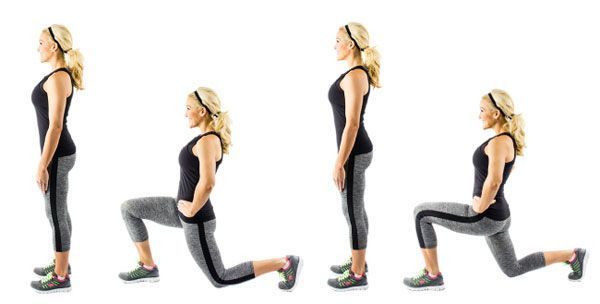
Lunges are a very effective exercise that pumps up not only your legs, but also your buttocks. At first glance it may seem easy to do. But to achieve good technique, a teenager will need more than one month.
In the early stages, the teenager can do standard lunges. As his technique improves, he can make things more difficult. Start using weights.
Dumbbells can be used as the latter. If a teenager does not want to spend additional money, he can pick up bottles. Capacity from one to two liters.
On topic: Exercises for the buttocks lesson
You can do lunges both in one place and while walking around the apartment.
Exercise technique
Lunges should be done as follows:
A teenager needs to stand up straight. The back needs to be slightly arched. At lumbar level.
After this, the teenager needs to place his right foot on the floor. Sit on the opposite knee. So that your legs form a ninety-degree angle.
After performing one lunge, the teenager must change legs. And put the opposite one on the floor. It is necessary to change legs during the exercise.
When a teenager lunges, he must keep his back straight. Don't fall on your feet.
It is recommended to do three to five sets of lunges per day. No less than ten and no more than fifty repetitions at a time. Depending on the physical fitness of the teenager.
Jumping
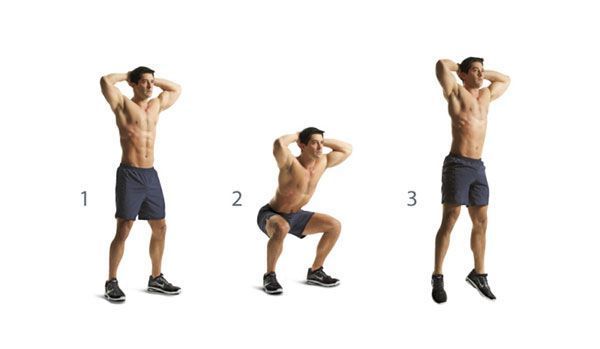
Jumping exercises are an exercise in which the teenager will have to squat. And then push up. They allow the teenager to improve the performance of the lower leg. Your buttocks. Hips. And also backs.
Jumping will allow a teenager not only to tone his body. But they will also teach him explosive power.
In the first stages, you need to do jumping without additional weight. To prevent injury.
How to perform jumping exercises?
Jumping should be performed as follows:
The teenager must look ahead.
It is recommended to do jumping every day. Three approaches. Each of which consists of ten to fifteen repetitions.
Calf raises

Calf raises will allow a teenager to tone their calves. This exercise can be done both standing and sitting. In the first case, the outer part of the calves will swing. And when performing the exercise while sitting - internal.
Important!
If the teenager has not previously played sports or worked out his calves, then the exercise must be performed as carefully as possible. Otherwise, the teenager risks injury. Or earn a sore throat that will make him suffer over the next few days.
Technique for performing the calf raise exercise
Doing calf raises is very simple. However, to achieve the effect, the teenager needs to monitor his technique. Make sure that the calf stretches as efficiently as possible. And the muscles tensed during execution.
You need to do the exercise as follows:
- The teenager needs to stand with his toes on a certain height.
- The feet should be placed parallel to each other.
- The heels must be placed so that they can be lowered.
- The teenager needs to start doing the exercise. Lower your heel. Do this so that the muscles are stretched as much as possible.
- When the heel reaches the floor, the teenager needs to quickly lift the toe up.
- Wait a few seconds. And then start lowering your heel to the floor again.
- The teenager needs to lower his legs again.
The teenager should keep his legs straight. The back should not bend. The main emphasis should be on the calves.
At the same time, the knees should not be bent. And your heels should not press too hard to the floor.
Exercises for the buttocks
The best exercises to pump up your buttocks in 2 weeks are squats. If there is excess volume in this area, then with the help of squats you can quickly and effectively lose weight. But we should not forget that squat exercises must be done with dumbbells or other weights.
Another equally effective exercise that helps pump up your buttocks in 2 weeks is the forward lunge with weights. It is done like this: you need to stand up straight, holding one dumbbell in your hands. Then we stretch our arms forward at shoulder level and at the same time lunge forward with one leg. In this case, the second leg should remain as far back as possible. You must ensure that your back remains straight. After the lunge, you need to return to the original position. And thus alternate legs. For better effect, lunges can be done to the sides. The number of times can be from 15-20 in one direction, and so on 3-4 approaches.
The next exercise that will help you pump up your buttocks in 2 weeks in the gym or at home is weighted swings. It allows you to use small flexor muscles, thereby working them out. If the gym has special machines for this exercise, then without a doubt it is better to use them. The idea is to get into a position on all fours with your back straight. Then put a weight on your leg and make swinging movements back, as if trying to press a button from above. For a more challenging version of this exercise, you can lean on your elbows. You need to do swing exercises 20-30 times in two approaches.
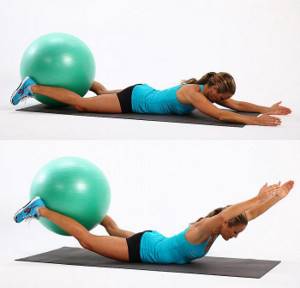
How to increase the load?

In order for a teenager to make progress in pumping his legs, he must periodically increase his load. This should be done when the teenager notices that the exercises have become easy to perform. And they no longer cause the same feeling of fatigue as before.
To increase the load, a teenager needs:
- Stop resting for long periods between sets and reps.
- Start doing the exercises more slowly. So that the body is under load for as long as possible.
- Do sets of exercises periodically. Perform sets with minimal rest. Or without it at all.
- Do more reps. Use means for additional load (dumbbells).
All of these recommendations will help your teenager increase their load effectively and safely.
